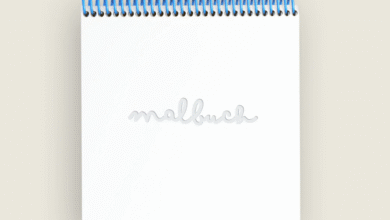Effective Strategies to Help Children With Dyslexia at Home

Raising a child with dyslexia can feel overwhelming, especially when you’re trying to support their learning outside the classroom. Dyslexia, a common learning difference that affects reading, writing, and spelling skills, doesn’t reflect a lack of intelligence—it simply means a child processes language differently. The good news? With the right home strategies, you can create an environment that helps your child thrive academically and emotionally.
At Speakeasy Solutions, we understand the challenges families face when navigating dyslexia. What makes the difference isn’t just therapy or tutoring—it’s consistent support at home. This article will walk you through practical, easy-to-follow strategies designed to boost confidence, encourage independence, and make learning feel less like a struggle and more like a success. Whether your child has just been diagnosed or you’ve been on this journey for a while, the following approaches can make your home a safe and empowering learning space.
Let’s dive into these effective and compassionate strategies to support your child with dyslexia—right from your living room.
1. Create a Reading-Friendly Environment
One of the best things you can do at home is to build a reading-positive atmosphere. This doesn’t mean pressuring your child to read nonstop. Instead, focus on making books feel like a natural, enjoyable part of life.
Start by filling your home with a variety of reading materials: graphic novels, audiobooks, large-print books, and even comic books can all help. Let your child choose what interests them, as this fosters a sense of ownership and motivation.
Set aside dedicated reading time, ideally when your child is relaxed—not just after school when they might already feel drained. Read together aloud and take turns. Use your finger to follow the text to help with word tracking. Add a cozy corner with cushions and warm lighting to make reading time feel safe and fun rather than intimidating.
Tip: Choose books with short chapters, clear fonts (like Dyslexie or OpenDyslexic), and plenty of white space. These details reduce visual stress and help your child engage better.
2. Use Multisensory Learning Techniques
Multisensory learning is key for children with dyslexia. This method taps into visual, auditory, and kinesthetic learning pathways to strengthen how the brain processes language.
For example, if your child is learning a new word, let them:
-
See the word written out
-
Say it aloud
-
Trace it in sand or on paper with their finger
-
Tap syllables or use a rhythm while spelling it
These activities help reinforce connections in the brain in a way that traditional memorization doesn’t. Everyday items like letter tiles, flashcards, or apps like Nessy or Ghotit can help integrate this approach easily at home.
The goal is to make learning a full-body experience—one that doesn’t feel like a chore but rather a playful exploration.
3. Incorporate Assistive Technology
Thanks to modern tools, children with dyslexia can access learning in more accessible ways than ever before. Assistive technology bridges the gap between challenge and success by making reading and writing less stressful.
Tools such as:
-
Text-to-speech software (like NaturalReader or Voice Dream Reader)
-
Speech-to-text apps (like Dragon Dictation or Google Voice Typing)
-
Spell checkers and grammar tools specifically designed for dyslexia
These tools can give children more confidence when completing homework or writing assignments. They remove the frustration of trying to spell everything perfectly, allowing the child to focus on expressing their thoughts.
Introducing these tools early not only boosts academic performance but helps children grow into confident, tech-savvy learners.
4. Break Tasks Into Small, Manageable Steps
Children with dyslexia often experience cognitive overload when faced with large assignments or complex instructions. To help, break tasks down into bite-sized pieces.
Instead of saying, “Write a paragraph,” guide your child through each step:
-
Brainstorm ideas aloud
-
Write 2–3 bullet points
-
Turn bullet points into sentences
-
Edit with your support using a checklist
This approach reduces anxiety and builds skills gradually. Use visual aids like to-do lists, timers, and color-coded notebooks to keep things organized. Celebrate small wins—every completed step matters and reinforces a sense of achievement.
5. Encourage a Growth Mindset
Your child’s self-esteem plays a big role in how they approach learning. It’s important to remind them that struggling with reading doesn’t mean failure—it just means learning differently.
Use phrases like:
-
“You haven’t mastered it yet.”
-
“Let’s try another way.”
-
“Mistakes help us learn.”
These words help shape a growth mindset, which can make a lasting difference in how a child sees challenges.
Model patience and curiosity in your own learning too. Share stories of famous people with dyslexia—like Albert Einstein or Whoopi Goldberg—to inspire resilience and self-belief.
6. Make Writing Fun and Pressure-Free
Writing can be particularly frustrating for children with dyslexia. To ease that pressure, use creative, low-stress writing activities:
-
Let them keep a “thought journal” where spelling doesn’t matter
-
Write letters or comics together
-
Use storytelling games or apps like Storybird
Focus on getting ideas out first and editing later. You can scribe for them or use speech-to-text tools if needed. Over time, this builds their confidence and fluency.
7. Communicate With Teachers Regularly
Your support at home is powerful—but combining it with input from teachers can make it even more effective. Regularly check in with your child’s educators to understand:
-
What’s being taught in class
-
What strategies are working
-
What challenges still exist
This collaborative approach ensures consistency between home and school. It also shows your child that everyone is working as a team to help them succeed.
8. Celebrate Progress, Not Perfection
Every small win deserves recognition. Did your child read an extra sentence today? Try a new word without hesitation? Celebrate it!
You don’t need big rewards. A high-five, sticker, or simply saying, “I’m proud of you,” can go a long way in reinforcing positive behavior.
Progress in dyslexia is often slow and nonlinear, but celebrating the journey makes it easier—and more enjoyable—for everyone.
Final Thoughts
Helping a child with dyslexia at home isn’t about fixing them—it’s about supporting them. With patience, the right tools, and lots of encouragement, your home can become a sanctuary for learning and growth. The strategies above aren’t just educational—they’re empowering.
At Speakeasy Solutions, we believe that every child deserves a chance to thrive. If you’re looking for personalized guidance or speech and language support, we’re here to help you every step of the way.




